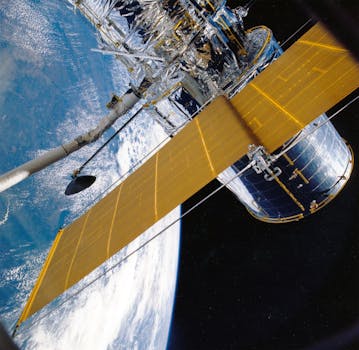
The Future is Now: Exploring the Cutting-Edge Innovations in Satellite Telecommunications
Satellite telecommunications is an ever-evolving field, with new innovations and advancements being made regularly. The future of telecommunications is now, with cutting-edge innovations in satellite telecommunications revolutionizing the way we communicate. From providing internet access to remote areas to enabling global communication networks, satellite telecommunications plays a vital role in our daily lives.
Introduction to Satellite Telecommunications
Satellite telecommunications involves the use of satellites to transmit and receive data, voice, and video signals. This technology has been around for several decades, but recent advancements have made it more efficient, reliable, and affordable. Satellite telecommunications is used in a variety of applications, including telecommunications, navigation, weather forecasting, and remote sensing.
One of the key benefits of satellite telecommunications is its ability to provide coverage to remote and underserved areas. Traditional telecommunications infrastructure, such as fiber optic cables and cell towers, can be expensive and difficult to install in these areas. Satellite telecommunications provides a cost-effective solution, enabling people in remote areas to access the internet, make phone calls, and communicate with others around the world.
Cutting-Edge Innovations in Satellite Telecommunications
There are several cutting-edge innovations in satellite telecommunications that are revolutionizing the industry. One of the most significant advancements is the development of high-throughput satellites (HTS). HTS satellites have a much higher bandwidth than traditional satellites, enabling them to provide faster and more reliable internet connections. This technology is particularly useful for applications such as video streaming, online gaming, and cloud computing.
Another innovation in satellite telecommunications is the use of low-Earth orbit (LEO) satellites. LEO satellites are smaller and less expensive than traditional satellites, and they have a lower latency than traditional satellites. This makes them ideal for applications such as real-time communication, navigation, and remote sensing. Companies such as SpaceX and OneWeb are launching constellations of LEO satellites to provide global internet coverage and enable new applications such as satellite-based navigation.
Artificial intelligence (AI) and machine learning (ML) are also being used to improve satellite telecommunications. AI and ML algorithms can be used to optimize satellite performance, predict and prevent errors, and improve the overall efficiency of satellite networks. This technology is still in its early stages, but it has the potential to revolutionize the satellite telecommunications industry.
Applications of Satellite Telecommunications
Satellite telecommunications has a wide range of applications, from providing internet access to remote areas to enabling global communication networks. One of the most significant applications of satellite telecommunications is in the provision of emergency services. Satellite telecommunications can be used to provide critical communication services during natural disasters, such as hurricanes, earthquakes, and tsunamis.
Satellite telecommunications is also used in the maritime and aviation industries. Ships and aircraft use satellite telecommunications to communicate with shore-based stations and other vessels, enabling them to navigate safely and efficiently. Satellite telecommunications is also used in the provision of navigation services, such as GPS and GLONASS.
In addition to these applications, satellite telecommunications is also used in the provision of television broadcasting services. Satellite telecommunications enables television broadcasters to transmit their signals to a wide audience, including areas that are not served by traditional broadcasting infrastructure.
Conclusion
In conclusion, the future of telecommunications is now, with cutting-edge innovations in satellite telecommunications revolutionizing the way we communicate. From providing internet access to remote areas to enabling global communication networks, satellite telecommunications plays a vital role in our daily lives. As the industry continues to evolve, we can expect to see new and exciting innovations that will further improve the efficiency, reliability, and affordability of satellite telecommunications.




